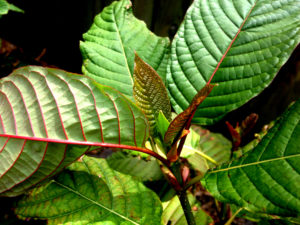An FGCU Student’s Reaction to the DEA Scheduling of Mitragyna Speciosa
An FGCU Student’s Reaction to the DEA Scheduling of Mitragyna Speciosa
 Once again, the DEA has made a decision that will likely lead to more harm than good. The move to regulate Mitragyna speciosa (kratom) and its active alkaloids, mitragynine (MG) and 7-hydroxymitragynine (7HMG), as Schedule I substances is just one addition to a long list of poor policy decisions with little basis in science. Schedule I drugs are defined as substances that have no medicinal benefit, a high potential for abuse, and that pose a danger to users and society at large. These assertions are not supported by scientific literature or the history of kratom use.
Once again, the DEA has made a decision that will likely lead to more harm than good. The move to regulate Mitragyna speciosa (kratom) and its active alkaloids, mitragynine (MG) and 7-hydroxymitragynine (7HMG), as Schedule I substances is just one addition to a long list of poor policy decisions with little basis in science. Schedule I drugs are defined as substances that have no medicinal benefit, a high potential for abuse, and that pose a danger to users and society at large. These assertions are not supported by scientific literature or the history of kratom use.
Mitragyna speciosa is a plant native to Southeast Asia, where it has been used in traditional medicine for thousands of years. It was formally “discovered” and named by Dutch colonists in 1839 (Korthals 1839), but before then, its use in Eastern traditional medicine was commonplace. The leaves of the tree can be smoked, chewed, or brewed into a tea. It was used as a painkiller, an anti-diarrheal, an anticonvulsant, an antitussive, a mood enhancer, and as a prevention for premature ejaculation. Small doses were used by workers to boost energy, and kratom was often used as an opium replacement when opium was unavailable or prohibitively expensive (Eisenman, 2014). Today, many users of kratom have reported success using teas and extracts to treat opioid dependency. This is because the active alkaloids of kratom, mitragynine and its derivatives, have a pharmacology similar to morphine. While these alkaloids have not been extensively studied in isolation, the fact that kratom leaves have been used safely for thousands of years suggest that plant supplements should be regulated for quality and purity assurance purposes, not placed on the list of Schedule I drugs. This, like cannabis, is another example of a therapeutic plant that has been used for longer than most world governments have existed being criminalized, when people should have the right to grow it in their backyard.
Mitragynine, one of kratom’s alkaloids, is not completely understood pharmacologically, though its pain relieving and inebriating qualities are primarily attributed to its action at μ and δ opioid receptors, similar to morphine (Thongpradichote 1998). However, there are significant differences in the effects of kratom alkaloids versus opioids. There is little structural similarity, and the psychoactive effects are a bit different as well. Kratom extracts show contradictory dose-dependent effects. At low doses, users describe a stimulating effect not typical of opioid substances, but at higher doses the effects more closely mirror that of other morphine derivatives. Mitragynine produces less severe side effects in comparison to other opioids; most notably, the respiratory depressant effect (the main cause of fatal opioid overdose) is less severe than that of morphine (Philipp 2009). Its efficacy as a painkiller is on par with that of oxycodone (Carpenter 2016), and it has additionally been shown to treat depression in a mouse model (Idayu 2011). 7-hydroxymitragynine, a minor alkaloid of kratom, is more potent than morphine but produces less constipation (Matsumoto 2006).
Health problems related to kratom use are difficult to evaluate due to the conflicting nature of reports from Asia and the West. The DEA claims there were 660 poison control calls related to kratom between 2010 and 2015 with users reporting nausea, itching, dry mouth, chills, constipation, or other side effects. There were two reports of seizures following kratom use, however there is no pharmacological explanation for this. In a case report of 14 individuals in 2013, six of them abused other drugs. Nine deaths attributed to kratom in Sweden were likely caused by the adulteration of the brand name extract Krypton, which contained the potent opiate O-desmethyltramadol. Because these reports are nonexistent in Southeast Asia, where the plant is primarily grown and commonly used, adulteration of extracts sold on the internet cannot be ruled out as the primary cause of many reports of kratom toxicity (Singh 2016). Even if that were not the case, 660 reports of side effects or overdose for a popular, legal opioid is nothing compared to the 16,651 pharmaceutical opiate overdoses in 2010 alone – a number that has steadily increased in every year since. If kratom were better regulated, consumers would know what they are getting. Putting kratom on the list of Schedule I drugs will make it more likely to be adulterated when its trade and consumption are pushed into the black market.
From the studies presented, it would appear that MG and 7HMG should be considered to be relatively safe, sometimes superior, alternatives to prescription opioids. Very low doses are required to stave off withdrawals from pharmaceutical opiates and heroin, and thus it would be fairer to compare the toxicity of kratom alkaloids to other drugs used for this purpose such as methadone. Methadone is a dangerous treatment option – according to the CDC, 30% of opioid overdoses in 2012 were due to methadone despite it making up only 2% of opioid prescriptions. Overdoses have occurred with amounts as low as 40mg, where the recommended maintenance dose is at least 60mg. People have overdosed on methadone taking less than their doctors prescribed. Yet methadone is Schedule II, alongside other opioid analgesics. Even Carfentanyl, the absurdly potent fentanyl analogue that recently caused a record surge in overdoses throughout the Midwest, is a Schedule II drug.
In summary, though the chemicals within kratom have not been substantially studied in isolation, they have been consumed safely for thousands of years via the chewing of the leaves of the kratom plant in Southeast Asia, which suggests that the plant should be regulated, but not scheduled. Schedule I status makes it impossible to adequately evaluate kratom and its alkaloids and neglects the thousands of years it has been used as medicine. Based on the limited information we have, there is potential for kratom to be useful for pain management and treating opioid withdrawal. Considering there are significantly more dangerous opioids that enjoy a less restricted status, and many (W18, U4, U47, etc.) that are unscheduled, I find the DEA’s decision to crack down on kratom to be absurd. Their decision isn’t based on good science, but prevents that science from happening. In the middle of a so-called epidemic of opioid addiction, they’ve come down on a plant that, when used correctly, has great potential as a maintenance drug to help those struggling with addiction to quit.
So what is the DEA’s motivation for the scheduling in the first place? Kratom is a plant. You can’t patent it, or any of its alkaloids. Manufacturers of buprenorphine, methadone, and naltrexone have nothing to gain from further research into herbal opioids. In other words, the DEA is doing what the DEA does best – lining their pockets, and the pockets of drug companies, while shafting the public they claim to protect.
- Pieter Willem Korthals, “Observasions de Nauclais Indicis”; Bonnea; 1839; p. 20.
- Eisenman, Sasha W (2014). “Chapter 5. The Botany of Mitragyna speciosa (Korth.) Havil. and Related Species”. In Raffa, Robert B. Kratom and Other Mitragynines: The Chemistry and Pharmacology of Opioids from a Non-Opium. CRC Press. pp. 57–76. ISBN 978-1-4822-2519-8.
- Matsumoto, K., Mizowaki, M., Suchitra, T., Murakami, Y., Takayama, H., Sakai, S. I., … & Watanabe, H. (1996). Central antinociceptive effects of mitragynine in mice: contribution of descending noradrenergic and serotonergic systems. European Journal of Pharmacology, 317(1), 75-81.
- Thongpradichote, S., Matsumoto, K., Tohda, M., Takayama, H., Aimi, N., Sakai, S. I., & Watanabe, H. (1998). Identification of opioid receptor subtypes in antinociceptive actions of supraspinally-admintstered mitragynine in mice.Life Sciences, 62(16), 1371-1378.
- Carpenter, J. M., Criddle, C. A., Craig, H. K., Ali, Z., Zhang, Z., Khan, I. A., & Sufka, K. J. (2016). Comparative effects of Mitragyna speciosa extract, mitragynine, and opioid agonists on thermal nociception in rats. Fitoterapia,109, 87-90.
- Singh, D., Narayanan, S., & Vicknasingam, B. (2016). Traditional and non-traditional uses of Mitragynine (Kratom): A survey of the literature. Brain research bulletin.
- Hassan, Z., Muzaimi, M., Navaratnam, V., Yusoff, N. H., Suhaimi, F. W., Vadivelu, R., … & Jayabalan, N. (2013). From Kratom to mitragynine and its derivatives: physiological and behavioural effects related to use, abuse, and addiction. Neuroscience & Biobehavioral Reviews, 37(2), 138-151.
- Kronstrand, R., Roman, M., Thelander, G., & Eriksson, A. (2011). Unintentional fatal intoxications with mitragynine and O-desmethyltramadol from the herbal blend Krypton. Journal of analytical toxicology, 35(4), 242-247.
- Idayu, N. F., Hidayat, M. T., Moklas, M. A. M., Sharida, F., Raudzah, A. N., Shamima, A. R., & Apryani, E. (2011). Antidepressant-like effect of mitragynine isolated from Mitragyna speciosa Korth in mice model of depression. Phytomedicine, 18(5), 402-407.
- Matsumoto, K., Hatori, Y., Murayama, T., Tashima, K., Wongseripipatana, S., Misawa, K., … & Horie, S. (2006). Involvement of μ-opioid receptors in antinociception and inhibition of gastrointestinal transit induced by 7-hydroxymitragynine, isolated from Thai herbal medicine Mitragyna speciosa.European journal of pharmacology, 549(1), 63-70.
- Philipp, A. A., Wissenbach, D. K., Zoerntlein, S. W., Klein, O. N., Kanogsunthornrat, J., & Maurer, H. H. (2009). Studies on the metabolism of mitragynine, the main alkaloid of the herbal drug Kratom, in rat and human urine using liquid chromatography‐linear ion trap mass spectrometry. Journal of mass spectrometry, 44(8), 1249-1261.
- Sabetghadam, A., Navaratnam, V., & Mansor, S. M. (2013). Dose–response relationship, acute toxicity, and therapeutic index between the alkaloid extract of Mitragyna speciosa and its main active compound mitragynine in mice.Drug Development Research, 74(1), 23-30.






